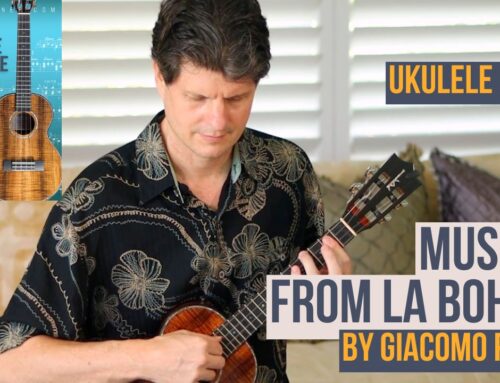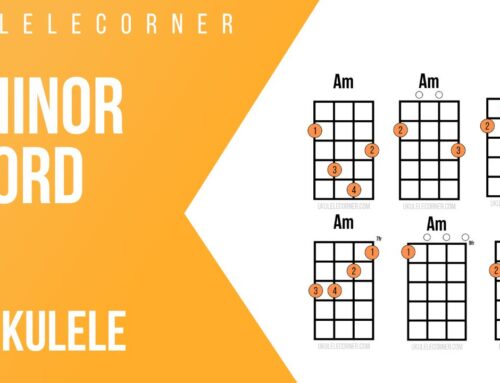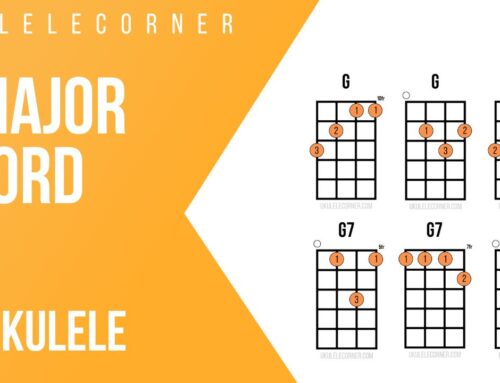Using tone color changes on fingerstyle ukulele can add new levels of expression to your ukulele playing. In this lesson we’ll look at how to incorporate tone color into your technique.
Let’s explore the full range of sound that can be produced with right-hand placement from the bridge all the way to the 12 fret of the instrument.
Tone Color on Fingerstyle Ukulele
The use of tonal variation is often overlooked when playing the ukulele but can transform the music you play adding levels of expression that are not only engaging to the listener but enriching for the performer as well. I often focus on tone and phrasing while performing and find that the music comes to life dramatically with expression and emotion.
Three Types of Tone Color
There are basically three types of tone that are used in music from warm to normal to bright. The musical terms used for these tonal centers are:
- tasto or dolce for a sweet, warm sound;
- normale for a neutral tone; and
- ponticello for a bright sound.
Each can be achieved on the ukulele with right-hand placement.
Right-hand Placement for Tone Color Variations
Let’s start with a normal sound. I find that the sweet spot for a nice neutral tone is with the right hand thumb just over the fingerboard and the rest of the fingers over the sound hole. To produce a tasto tone, move to the left further over the fingerboard. To produce a ponticello tone, move towards the bridge. Try playing any open string from the normal position near the beginning of the fingerboard. Listen carefully to the tone then slowly move the right hand either towards the 12th fret or bridge. You can use your right hand thumb to play the notes or use other combinations of thumb, index, middle, and ring fingers. Using more flesh with the thumb will also help to produce a warm sound while using more nail adds brightness.
You will find that it can be challenging to use the fingers to play the strings over the fingerboard because there is very little room to move before the fingers make contact with the fingerboard. Work on this slowly and play softly to start with and you will get the hang of it. The thumb moves easily over the fingerboard so you can start with the thumb then transition to the other fingers later. Try both rest and free strokes and listen for the variations in tone.
Using Tone Color Changes in a Scale
Once this starts feeling good, let’s try a C scale across the top 3 strings in first position.
Play the 3rd string 0 and 2, 2nd string 0, 1, and 3 and 1st string 0, 2, and 3. The notes will be C, D, E, F, G, A, B, and C. This covers one octave. Try the three playing positions and really exaggerate the tonal changes. Don’t be afraid to get close to the bridge for a very bright ponticello sound and right up the 12 fret for a warm tasto tone. This full range of tone will transform the music you play.
Bell Tones
The warmest tone is produced when you play 12 frets away from any given note with the right hand. This cancels out the harmonic overtones that add brightness to the sound. For a real adventure try the same C scale and trace the motion 12 frets higher with your right hand. This will produce a very pure, almost hollow tone. You hear the fundamental pitch of each note without the overtones. Your right hand will trace this pattern: 12 and 14 on 3, 12, 13, and 15 on 2, and 12, 14 and 15 on 1.
Bright Overtones
Now try the opposite extreme and play next to the bridge for a bright sound full of overtones. Move back and forth between the two positions and listen to the results. This is your tonal pallet to work with and you can decide what suits each phrase you play. As you explore this and start to understand how to use tonal contrasts to build phrases your sound will evolve.
Once you start connecting with these tonal changes try to use them when playing pieces you know well. You can try this with strumming, single line melodies, fingerstyle accompaniment, and full solo pieces. I hope you enjoy exploring the range of sound possible on your ukulele and hope to connect with you and hear the results.
***
We explore how to use these techniques while playing repertoire from the Renaissance era to modern day with classical, jazz, Hawaiian, and contemporary music at Ukulele Corner Academy. Go here to learn more or join Ukulele Corner Academy today.
Aloha,
Jeff Peterson




Very interesting. Thank you for providing me with a new discovery.
Thanks as always Jeff. Certainly a fun way to re-explore an older favorite piece. Recently bought your Sor progressive studies. A lifetime of learning here. Great work!!!